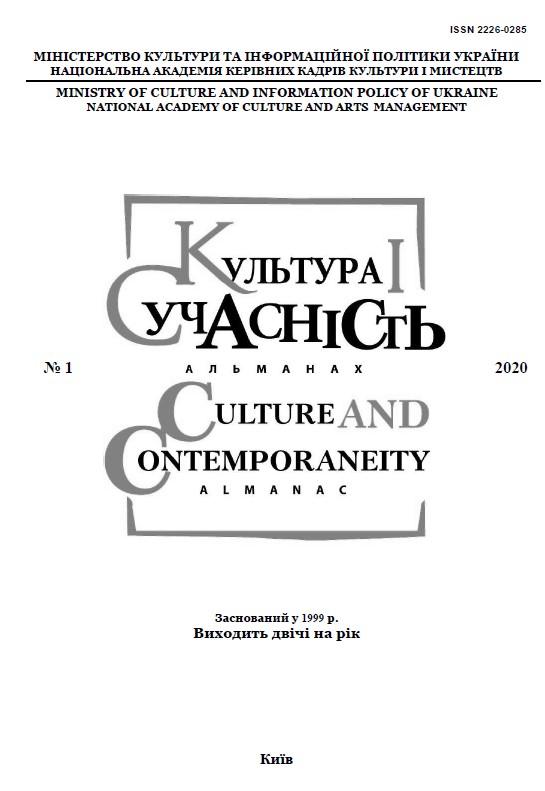ХУДОЖНЬО-ЕСТЕТИЧНІ ТА ФІЛОСОФСЬКІ ЗАСАДИ АРТ-НУВО
АRTISTIC AND AESTHETIC AND PHILOSOPHICAL FOUNDATIONS OF ART NOUVEAU
Author(s): Svetlana OborskayaSubject(s): Cultural history, Visual Arts, Aesthetics, History of Art
Published by: Національна академія керівних кадрів культури і мистецтв
Keywords: art nouveau; Japaneseism; aesthetics; philosophical basis; insectomorphic motifs;
Summary/Abstract: The purpose of the article is to identify the influence of creativity of Japanese artists of the Edo and Meiji period on the formation of the artistic, aesthetic and philosophical foundations of the art nouveau style. Research Methods. The method of historicism is applied (to study the specifics of style in the context of political and cultural processes between Europe and Japan in the second half of the 19th century); cognitive method (to study the specifics of individual creative methods of French artists); the method of formal style analysis (to comprehend the artistic and aesthetic features of the Art Nouveau style) and the system method (to develop common criteria for classifying the artistic and aesthetic and style features of Japanese art of the Edo and Meiji period, as well as to identify the features of their integration in the Western European space of social art). Scientific novelty. The influence of the creativity of Japanese artists K. Hokusai, K. Utamaro, S. Dziesin, K. Gekusho and V. Seitei on the formation of the philosophical and artistic and aesthetic foundations of art nouveau is investigated; the phenomenon of Japaneseism is considered as a source of updating the artistic and aesthetic vision of the world in the work of leading French artists of the late XIX - early XX century; it was found that due to the influence of Japanese art, the art nouveau style is characterized by principles of space organization unique in Western European art (triplanic construction of the space of paintings, the role of an unfilled background, fragmentation and framing, increased foreground details, a significant role of asymmetry, the conventionality of space construction, and meaningful filling of the line , decorative beginning, rejection of the depth of space, conventionality of color) and the dominance of insectomorphic motifs. Conclusions. Art Nouveau's artistic style is associated with traditional East Asian, especially Japanese, thinking, reminiscent of kami in Shintoism and original enlightenment in Zen Buddhism, in recognizing the existential value of microscopic organisms living on the earth, and even inanimate things like water and stones . In the context of the dual aesthetics of art nouveau, freed from Cartesian dualism, binary opposites, like intellect and emotions, culture and nature, rationality and chance, order and chaos, good and evil, man and woman are combined into a single whole.
Journal: Культура і сучасність
- Issue Year: 2020
- Issue No: 1
- Page Range: 85-90
- Page Count: 6
- Language: Ukrainian

